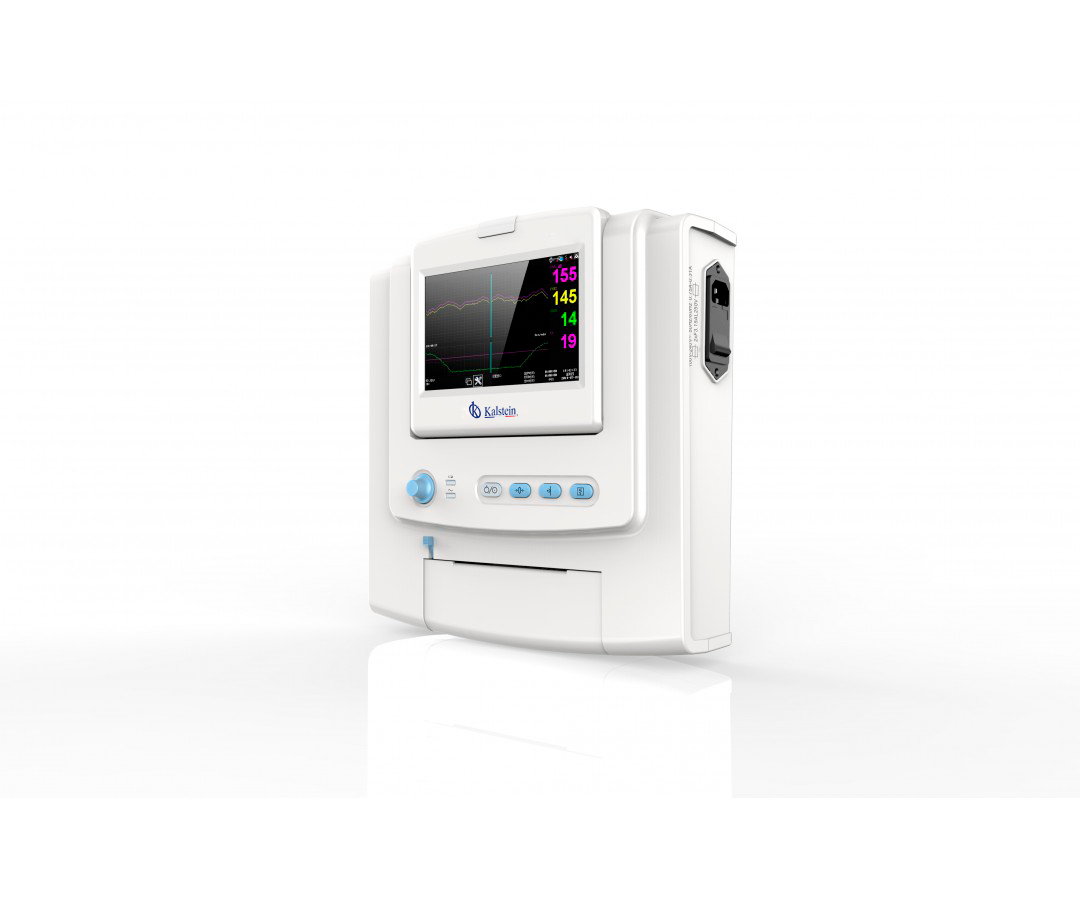A pediatric vital signs monitor or also called a pediatric vital signs monitor is an electronic equipment that allows the detection, processing and continuous display of the vital signs of the pediatric patient such as: breathing rate, blood pressure, body temperature and pulse.
Vital signs refer to the external manifestation of basic vital functions, such as breathing, circulation and metabolism. Its variations express changes that are generated in the body, some of physiological origin and others of pathological origin.
How does a pediatric vital signs monitor work?
A pediatric vital signs monitor functions differently for each vital sign in the case of heart rate by amplifying the electrical potentials of the heart, in the case of respiratory rate it magnifies the chest respiratory movements, and the blood pressure and oxygen saturation will depend on the intensity of the pulse.
All of these vital signs are then displayed separately on the vital sign monitor. The device has alarm systems that alert medical personnel when any negative situation exists or when any of these vital signs are outside the desired limits for each pediatric patient.
What are the basic vital signs determined by this type of monitor?
- Respiratory rate: Refers to the number of times the child breathes per minute. It is usually measured at rest and varies with age and is the first vital sign evaluated because anxiety and agitation interfere with respiratory rate. In clinical situations that increase the child’s metabolic needs such as pain and fever, the respiratory rate is higher than normal.
- Heart rate: The number of times the heart beats per unit time. A series of electrodes is used to determine the rhythm of the heart, recording and amplifying electrical impulses in the child’s body.
- Blood pressure (BP) is the pressure exerted by blood against the walls of arteries, resulting from cardiac minute volume by peripheral arteriolar resistance, the latter determined by the tone and condition of arterioles. One of the main characteristics of blood pressure in childhood is that it is a variable parameter, with a wide distribution of values, which increase progressively with the growth of the child.
- Temperature: Body temperature is the numerical expression of the body’s amount of heat. This parameter expresses the balance between heat production in the body and loss.
- O2 saturation: Refers to the noninvasive measurement of oxygen carried by hemoglobin within blood vessels. The normal values of O2 saturation oscillate between 95-97% with a variation range of 2%.
Benefits of pediatric vital sign monitors
- Fully adapted for work with children.
- They are electronic devices that are easily configured, as they are easy to connect to the patient, and quick to access to set the basic functions, limits of alarms and types of alarms.
- They are easy to operate equipment: they have quick access to parameters during monitoring, show arrhythmias, tendencies, usually allow recording on paper.
- They have easy-to-learn functions and modes of operation.
- They have simple designs, which allow the correct visualization on screen of the curves and the numerical data.
What do we offer you in Kalstein?
Kalstein is a company MANUFACTURER of medical and laboratory equipment of the highest quality and with the most advanced technology at the best prices in the market, so we guarantee you a safe and effective purchase, knowing that you have the service of a company solid and committed to health. This time we present our Patient Monitors YR02170 // YR02172, specially designed for newborns. HERE
- 8.4-inch Touch Screen, ECG (3 leads), Suntech NIBP, Masimo SpO2, RESP, TEMP Signal, HR/PR, Multiple Screen Interface, Respiratory Choke Analysis, 112mm Printer, Lithium Battery
- Lightweight and compact design
- Detection of weak current up to 0.1 mv ECG ensures monitoring performance in neonates;
- The anti-movement technology used in SpO2 and NIBP ensures accurate reading;
- Single adjustable breathing wire to increase the accuracy of monitoring the neonatal patient.
- Built-in 112mm printer with a maximum output of 7 waveforms simultaneously.
For more information we invite you to take a look: HERE

